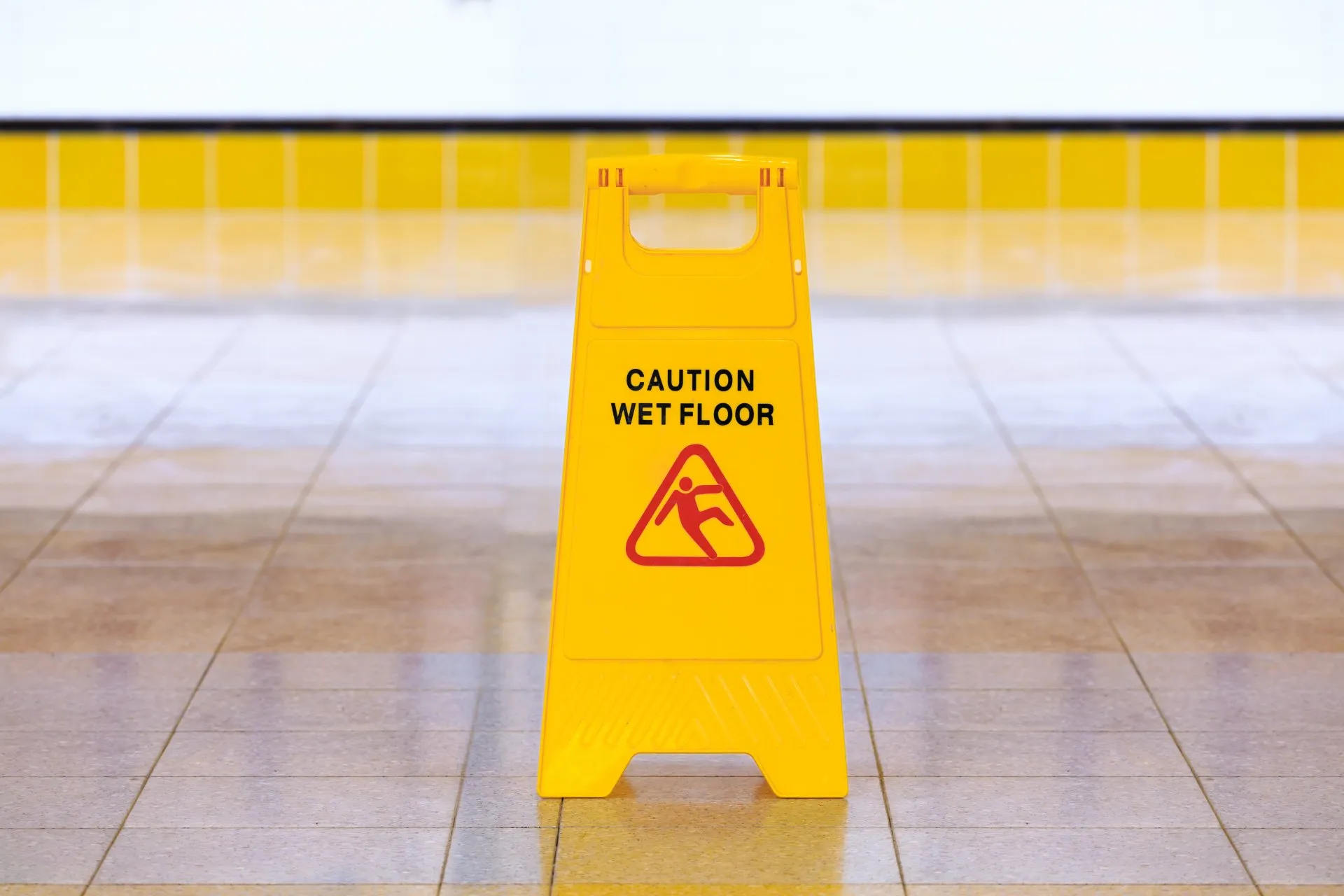
Slip and fall injuries are one of the most common (if not the most common) types of premises liability claims. Not all premises liability claims are slip and fall claims, but all slip and fall injuries are premises liability injuries.
Injuries or damages sustained as a result of unsafe spaces can entitle you to financial compensation. Business owners and property owners are expected to maintain a reasonable level of safety to prevent these types of injuries, but the true cause of your injuries is not always so cut and dry.
Premises Liability Cases
Premises liability cases are situations where you suffer an injury on someone else’s property either due to neglect or failure to remedy an unsafe condition. In a premises liability claim, the responsible party may be:
- The property owner
- Landowner
- Property manager
- Business owner
If a business is leasing space in a commercial building, and the hazard is directly related to their operations and not any defect with the property itself, the business is more likely to be liable than the actual property owner (although liability may be shared by multiple parties).
Tort Law in Premises Liability Cases
Tort law is a what makes premises liability cases possible in the state of Ohio (and every other state in the U.S.).
A tort is an action or lack of action taken that can result in injury to another party. This is considered a civil wrong and results in the liability of the at-fault party. Torts aren’t necessarily purely for personal injuries, but all personal injury cases are tort cases.
In a premise liability case, your right to safety when legally visiting someone else’s property has been compromised. This creates the potential for liability and may entitle you to compensation. Other notable examples of premises liability cases include:
- Negligent security
- Chemical exposure
- Elevator malfunction
- Dog bites
- Burns from fires or electrocutions from faulty wiring
- Construction defects (like broken banisters on stairs or compromised balconies resulting in collapses)
- Falling lights or roofing material
The most well-known premise liability case variety is a slip and fall case. Some people use the terms interchangeably and may simply say “slip and fall claims” when referring to all types of premises liability claims.
Slip and Fall Cases
Slip and fall cases are a type of premises liability case where a person is injured from falling due to unsafe conditions. There are countless ways in which someone might fall in a property. Boxes in walkways may create tripping hazards. Wet floors in aisles of a store may create slipping hazards. People can slip on ice on walkways in front of a store or trip in a pothole in a store parking lot. All of these injuries would fall into the “slip and fall” category of premises liability.
Proving negligence in a slip and fall case can be difficult. You will have to prove the hazard was a result of the owner’s negligence and the hazard was the direct cause of your injury.
There are situations where a property owner may not be considered liable for a legitimate hazard:
- The owner could not reasonably have been expected to know about the hazard
- The owner did not have a reasonable amount of time to put up warning signs, clean up or fix the hazard
- The person who was injured was inattentive and failed to avoid an obvious hazard
For example, if you drop a jar in a grocery store then immediately slip in the resulting puddle and cut yourself on broken glass, the business likely won’t be liable for your injuries. You created the hazard, and the business did not have time to fix it before your injury occurred.
The same might apply if someone dropped the jar a minute and a half before you walked down the aisle. The success or failure of that claim may be decided based on:
- What is a reasonable frequency of employee inspections of aisle condition?
- What is a reasonable amount of time between when a spill occurred and when an employee puts up a wet floor sign and mops up the spill?
- Did your injury occur before or after that interval of time elapsed?
A significant debate may occur during negotiations and litigation to determine degrees of culpability and what is and isn’t considered reasonable or appropriate from a premises safety perspective.
Ohio’s Contributory Fault Law
Contributory fault (Section 2315.33) can play a significant role in determining the damages you might be owed after a slip and fall. The law states that being partially at fault for your own injuries does not bar you from receiving damages, but your damages will be proportionally reduced by your percentage of culpability.
Both the actions of the claimant and the potentially negligent party will be considered when determining who is at fault. You might be found to have been partially at fault because you were looking at your phone instead of watching where you were walking, but the property owner might also be partially at fault because stray boxes or extension cords were in a walkway that should have been clear.
The extent to which contributory fault reduces your eventual claim payment will vary based on the unique situation.
Premises Liability Lawyers in Ohio
If you are a victim of a premises liability injury you may be entitled to compensation. Slip and fall cases can cause damages that last far beyond the incident, so don’t wait to file your claim. Our premises liability lawyers are here to help you build a case. Contact us at 1-800-411-PAIN today for a free case evaluation.
Truck Accidents in Ohio: Why They’re More Complicated Than Car Accidents
Understanding the Unique Challenges of Truck Accident Cases Accidents involving large commercial trucks are unfortunately common on Ohio’s highways, and they’re often far more devastating than a typical car accident.
Was the Trucking Company Negligent? Here’s How to Tell
When Truck Accidents Point to More Than Just Driver Error In the aftermath of a serious truck accident, most people assume the truck driver is solely at fault. But in
Motorcycle Accident Victims in Ohio: What You Need to Know
Understanding Your Rights After a Motorcycle Crash Motorcyclists face unique risks on Ohio’s roads. Without the protective shell of a vehicle, even a low-speed collision can cause devastating injuries. And
How Bias Against Motorcyclists Affects Legal Claims
The Hidden Hurdles Riders Face in Personal Injury Lawsuits Motorcyclists already face enough danger on the road, but many don’t realize that the challenges continue long after a crash. When
Legal Steps for Families of Railroad Accident Victims
When Tragedy Strikes on the Tracks Railroad accidents are rare, but when they occur, they often result in catastrophic injuries or death. Families of victims are left grieving—and facing a
The Role of Speed Limits in Reducing Pedestrian Injuries
Why Speed Limits Matter More Than You Think Speed limits are not arbitrary—they are critical safety measures based on road design, pedestrian traffic, and historical accident data. For pedestrians, the
Surgical Errors: When the Operating Room Becomes a Legal Battlefield
Surgery Should Heal—Not Harm Every surgery carries risk, but some outcomes are simply unacceptable. Surgical errors—often the result of negligence—can leave patients with lifelong complications or even result in wrongful
Radiology Errors: The Hidden Danger Behind Medical Misdiagnoses
Why Radiology Accuracy Is Essential to Your Health Radiology is one of the most powerful diagnostic tools in modern medicine—but when errors happen, the consequences can be life-altering. From cancer
Motorcycle Accidents in Ohio: Protecting Riders After Serious Crashes
Injured While Riding? Here’s What You Need to Know Motorcycle riders are some of the most vulnerable people on Ohio roads. Without the frame of a car to protect them,
What to Do After a Drunk Driving Accident in Ohio
Hurt by a Drunk Driver? Know Your Rights and Legal Options Drunk driving accidents can change lives in a matter of seconds. One moment you’re safely driving home, and the
